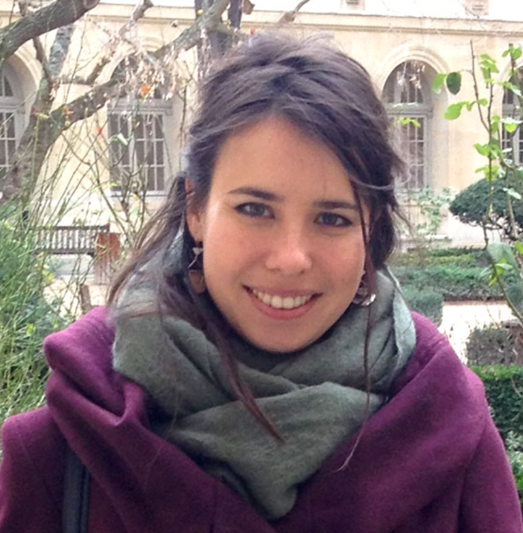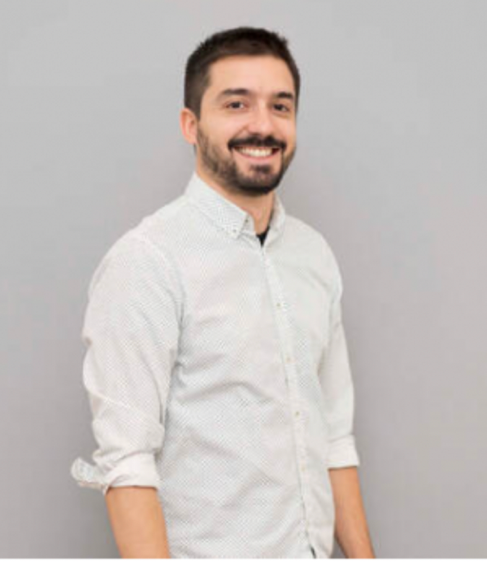2021 ViBILLER Interview
July 1, 2021
By: Alara Tuncer
In 2021, the estimated net worth of the live concert industry was $17.4 billion, a figure
expected to climb up to $31.1 billion by 2024 globally. To date, there are only a few ways of
objectively evaluating engagement and interest of live concerts. ViBILLER is a start-up founded
by three researchers from NYU Center for Language for Music and Emotion; Dr. Claire Pelofi,
Dr. Pablo Ripolles and Dana Bevilacqua. It is the “video-based interface for live labelling of
emotional responses” that aims to evaluate engagement in live performances. This is essentially
an algorithm that will be an accurate, affordable and computationally inexpensive way of
measuring emotional arousal for venue managers, producers and artists.
This is not only an ambitious task but also a difficult one, however, once put into use it can
bring revenue to the music industry and revolutionize how concerts are valued. This passion
project that initially began as a “pandemic research baby” as referred to by Bevilacqua, banks
on the idea that group emotion and engagement are predictors of consumer preferences and
purchasing decisions. The ViBILLER technology will be designed to give real-time feedback to
artists to enhance customer experience. Undoubtedly, it will be of great value for recorded
music and ticket sales as well as venue preferences.
And who better to design this interface than these researchers? Dr. Claire Pelofi as the lead
research scientist of ViBILLER has a background in philosophy, music and neuroscience with
experience studying “how the brain works and process music” in response to computational
models of sounds and “how language is processed in relation to rhythm”. Dr. Pablo Ripolles as
the lead collaborator and “the resident emotion expert” is an assistant professor for music
technology and psychology at NYU College of Arts and Sciences, where his research focuses on
utilizing cognitive neuroscience methods such as functional magnetic resonance imaging (fMRI)
and magnetoencephalography scan (MEG) to measure behavior and emotions in response to
music. Meanwhile Dana Bevilacqua is an associate researcher who has experience exploring
group dynamics and engagement with relation to real-life experiences—with expertise in
collecting data from interactive installations that combine art and science.
Since all researchers work under CLaME, Center for Language, Music and Emotion at NYU,
which is a “collaborative center that hit research topics that utilize theories and methodologies
across several domains” bringing together principles of language, music and emotion, surely it
isn’t a surprise that ViBILLER technology aims to do the same. Working to create a technology
that is an amalgamation and interdisciplinary has allowed the team to bring together an
“eclectic bunch” of researchers, artists and industry specialists to bring the idea to life.
The first hardship they faced as a start-up was quite unique—abandoning the initial idea that
united their team in the first place. Although the ultimate goal was always the same—to
measure crowd engagement and emotional arousal in a live event— the founders initially
thought of a different way to establish this. They called it the CHILLER, “a computer-human
interface for live labelling of emotional responses” that consisted of mini wearable sensor
gadget designed to evaluate emotional responses based on goosebumps. But how do you make
an audience wear a gadget? So, ultimately after the customer interviews and overwhelming
feedback, the team had to put this idea to bed and ViBILLER was unearthed—using video
software to record the crowd and evaluate engagement with an algorithm.
It is safe to say that all researchers with their unique experiences and expertise are more than
qualified to create this interdisciplinary and translational technology. Yet, as Bevilacqua states,
imposter syndrome can still be very real for entrepreneurs, especially for those who are in
minority groups. “The more you repeat the idea over and over again, you may take it for
granted what others may be hearing for the first time.” And this may “feel like it’s not worthy
or that it is something that someone else can do better.” When this is the case and “the
internal voices become the primary obstacle” as Bevilacqua states it is important “just get over
yourself and do it” and have a team to support one another. Dr. Pelofi states that self-
censorship leads “to a crowd that is not as diverse and rich as it should be” meanwhile Dr.
Ripolles adds that this is due to pressure imposed by society that we have yet to tackle. “Some
people don’t know the rules of the game,” states Dr Ripolles emphasizing the need to teach
underserved communities to be proactive and “go get what they want because they are just as
brilliant.”
Also, Bevilacqua emphasizes on the collective challenge they faced when transitioning from
academia to entrepreneurship. “It is a totally different mindset and a different language” that is
“almost uncomfortable” because of the contrast between sharing everything learned during
research in academia versus “being more protective of your intellectual property” for
entrepreneurship. When this was the case, she claims that taking advantage of all the resources
available was imperative, stating that “a diverse perspective from the entrepreneurial point-of
view has been really helpful”.
Dr. Ripolles explains how the perpetual curiosity that defines the personality of every scientist
can actually become problematic in entrepreneurship. Naturally, scientists formulate various
ideas simply because “that would be super cool” to study, but as the ViBILLER team found out
from their advisors, not all of these can make money. Dr. Pelofi emphasizes on the importance
of focusing on the society, significance and “the future trajectory of the entrepreneurial
product” when creating a design. This was an adjustment they had to make when creating
ViBILLER to fit the market need—shifting the focus from what is interesting to what is profitable
and practical for use.
Additionally, the team members emphasize on the importance of mentorship and mentorship
programs. The team members describe the I-Corps experience as being similar to a “hot seat”
where you have to find answers to the questions that are being asked—but as Bevilacqua states
“this is also what makes the experience validating,” giving them the opportunity of revising the
idea and making it better. Dr Ripolles jokingly states that academia prepares you for this sort
hardship, “when the world says no you have to keep saying yes because science is rejection and
it is brutal.” However, as something the team has learned through various workshops, as an
entrepreneur it is important to be open to criticism and accept that you don’t know everything
in order to develop your product.
Despite the obvious monetary gains that this project will bring to the team, this isn’t just a
project to capitalize on, it’s also a part of a larger research mission to understand how the brain
works. As Dr. Ripolles explains “music is a super interesting stimulus to understand how the
brain processes speech, rhythm or abstract rewards.” These are rewards that aren’t physical
and hard for us to study on animals. Just like we don’t completely understand what about a
sunset gives us pleasure, we also don’t understand what elements of music create emotional
arousal. In collaboration with CLaME, the ViBILLER project aims to support the larger goal of
using music to understand abstract rewards whilst contributing to a need of understanding
engagement in the live concert marketplace.
Lastly, having two female founders, I had the opportunity to ask the ViBILLER team what they
think would be the best way to support women to gain leadership roles. Dr Pelofi emphasized
the primary need for “changing the mentality surrounding maternal need.” In societies where
there are few options for women to have kids while working and lacking the norm that their
partner needs to be just as involved when having kids as them, women will be
undercompensated. When this is the case, “women will have to put their careers on hold”
which will set them back from their male counterparts. Additionally, normalizing the idea that
“the work of women is equal to the work of men” is likely to be beneficial, so that the work and
the burden is shared equally and there is a change in mentality regarding the issue.
The ViBILLER team has emphasized the importance of mentorship when having an
entrepreneurial idea. They even have said “having a great idea is the least of the worries.” So
far, they have gained support from Prof. Jin Montclare (CIE Institute Director) as a result of NSF
I-Corps. However, there is still work left to do. We wish ViBILLER the best of luck at their start-
up as they implement their idea, and we hope to see their technologies featured in future
concerts!



Dr. Claire Pelofi Dr. Pablo Ripolles Dana Bevilacqua
